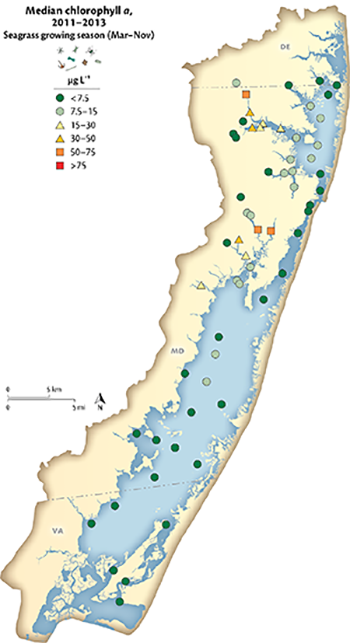Coastal Bays Water Quality Monitoring
Main_Content
Algae Levels
 Algae levels were overall good
Algae levels were overall good
Chlorophyll a levels (indicator of microscopic algal biomass or phytoplankton) met seagrass thresholds in most areas. Areas that failed the chlorophyll thresholds included the St. Martin River and tributaries of Newport Bay. High levels of algae in the water indicate nutrient inputs and can block light to seagrasses.
Seaweeds (macroalgae) fluctuated without trend
The highest abundance and diversity of seaweeds were observed in the northern bays. Red macro-algae dominated.
Harmful algae blooms are a concern
Potentially harmful algae blooms are determined through routine monitoring at 12 sites, Maryland Department of the Environment shellfish monitoring and through special studies. There is a close partnership with the county and other State agencies to monitor and make any needed management decisions.
Previous year assessments of chlorophyll a
- 2004-2007
- 2001-2003
- 1999-2001
Trends are calculated on dissolved oxygen due to the rapid daily changes
Continuous Monitoring Results
Data from the continuous monitoring stations reveal more insight into the annual changes in chlorophyll is the coastal bays.
For More Information:
Ecosystem Health Assessment 2007-2013 –Chlorophyll, Chapter 4.2 [NEED LINK]